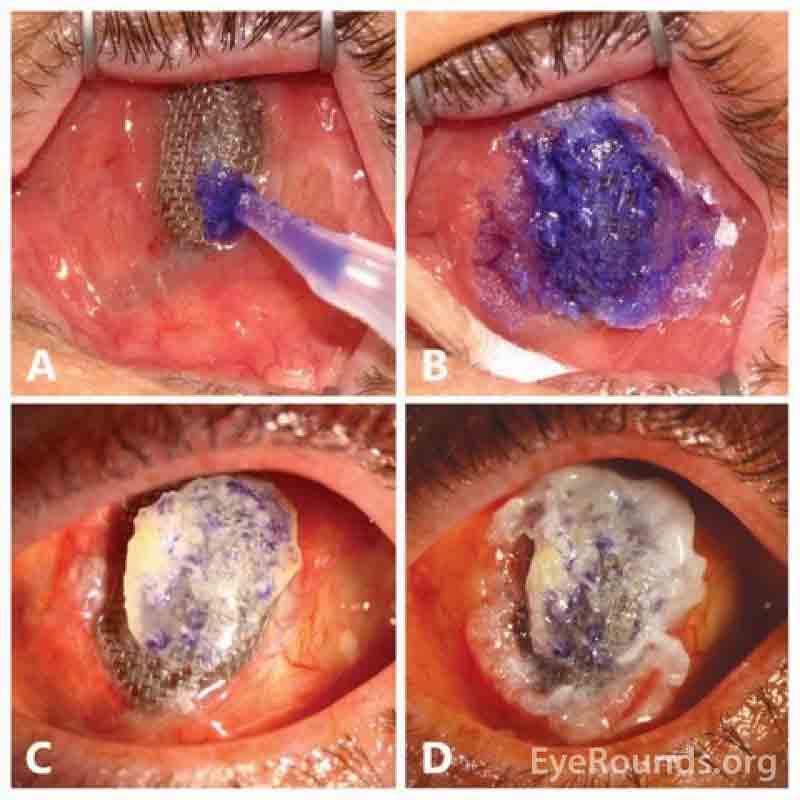Use of cyanoacrylate glue for an exposed orbital implant
Category(ies): Oculoplastics
Photographers: Sarah Skiles, CRA; Meghan Menzel, CRA
Contributor: Caroline Wilson, MD; Brittany Simmons, MD; Erin Shriver, MD, FACS
Posted February 24, 2021
A 68-year-old man with left anophthalmia secondary to childhood trauma presented with exposure of his tantalum mesh orbital implant. He was originally seen 17 years prior to presentation for exposure of the implant, at which time he refused surgical intervention and requested a non-surgical approach. Cyanoacrylate glue was applied to the exposed tantalum implant surface (Fig. A, B). He wore an ocular prosthesis comfortably over the glued implant surface before he was referred back to our institution for repeat exposure. The exam showed mucoid discharge and free eyelashes enmeshed in the implant surface with erosion of the glue at the peripheral edges of the exposed implant. The full extent of the exposure was appreciated after cleaning of the implant surface (Fig. C). Based on his previous positive experience with glue, he again declined surgical intervention and requested repeat cyanoacrylate application. The implant surface was prepped with povidone-iodine and glue was applied. One week after the glue application, the patient's symptoms had resolved and there were no visible areas of residual exposure (Fig. D). The patient was pleased with the comfort, fit, and motility of his ocular prosthesis over the glued implant surface and resolution of the mucoid discharge.



